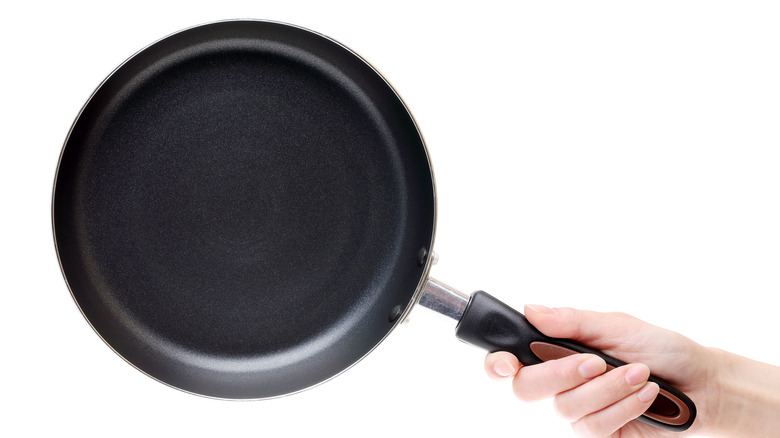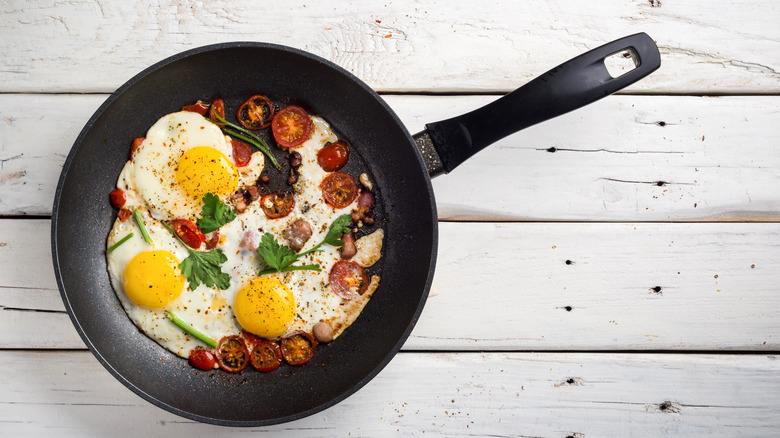This Is The Only Type Of Nonstick Pan You Should Be Using
A light and fluffy omelet; delicate, paper thin crêpes; buttery rainbow trout — all cooked flawlessly, thanks to your nonstick pan. Of course, that's assuming you have a good quality pan that's free of warps, scratches, dings, and discoloration. Reader's Digest explains that nonstick pans aren't actually meant to last forever, and signs of aging could indicate that harmful chemicals are leaching into your food. The magazine states that if your pan is warped, or has dark spots and/or deep scratches, chuck it and buy a new one.
Food & Wine adds that although the dangerous chemicals known as PFAS (per- and polyfluoroalkyl substances) are being phased out of nonstick and Teflon pan production, it's wise to check labels and choose cookware made with non-toxic coatings. And Martha Stewart's food editor suggests ponying up a little more dough for good quality cookware, since many nonstick skillets are "thin and lightweight, which leads to inconsistent heat, hot spots that can burn food, and a pan that doesn't hold up well."
What's the difference between regular and nonstick pans? Gear Patrol explains that regular pans contain throngs of tiny crevasses that expand when heated and grab the food in the pan, a process that promotes browning and that beloved crispy sear. On the other hand, the coating on nonstick pans fills the fissures and prevents food from clinging, making nonstick cookware an excellent option for foods (like eggs and pancakes) you want to slide out with ease.
Don't waste your money on a complete set of nonstick pans
A nonstick skillet may be ideal for foods with a sticky reputation, but The Spruce Eats suggests good-quality, uncoated stainless steel for the rest of your cookware; there's no need for nonstick saucepans and stock pots that house liquid-based dishes. The New York Times agrees and suggests you get yourself a fine 10-inch frying pan. The Kitchn believes that the all-purpose omelet pan is the best option, as long as it's good quality and free of scratches.
Serious Eats explains that nonstick cookware is best for scrambled eggs, omelets, Spanish tortillas, crêpes, and frittatas, and the eight-inch skillet and 10-inch skillet should suffice. Good Housekeeping prefers nonstick cookware for delicate foods because it's "forgiving when it comes to flipping and stirring, requires less grease to cook, and is much easier to clean." The magazine fancies nonstick skillets ranging in size from nine-and-a-half to 11 inches.
How should you care for nonstick pans? Food Network states that you should never use nonstick cooking spray (it can leave a buildup), and they suggest hand washing, even when the pan says "dishwasher safe." Additionally, they advise against heating an empty pan and using the pan over high heat, because both scenarios can damage the pan and release harmful odors and chemicals. Epicurious suggests avoiding metal utensils and recommends lining your nonstick pans with a paper towel or dish rag to protect the surface during storage.

